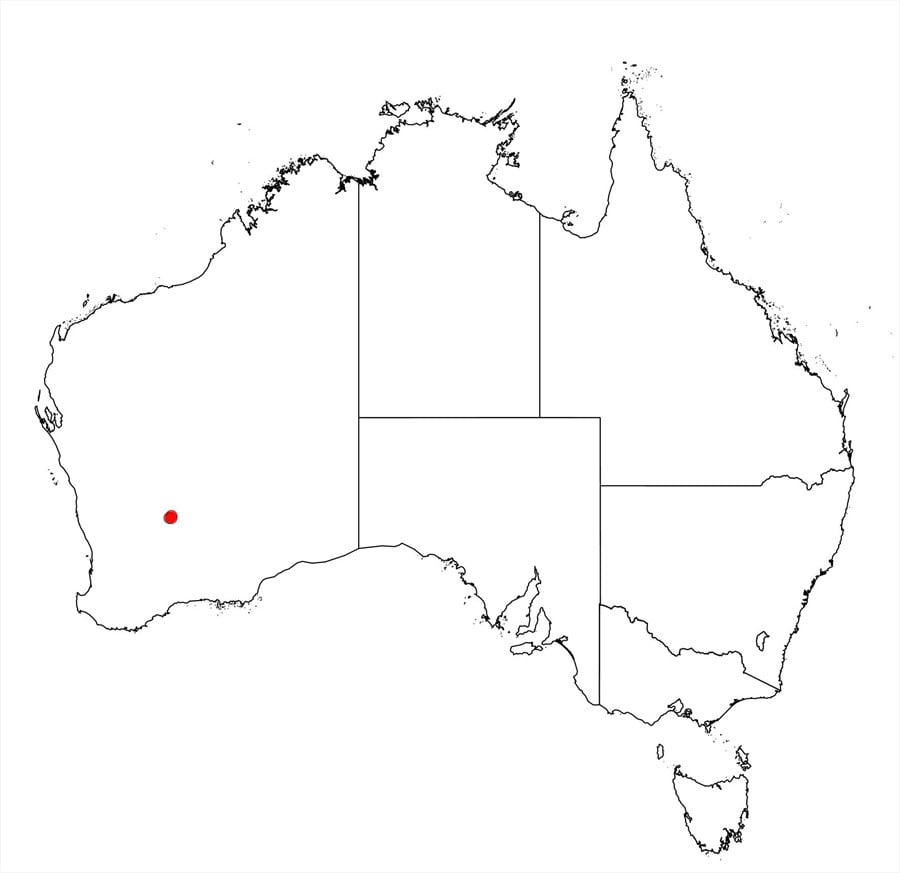Acacia shapelleae Maslin
WATTLE
Acacias of Australia
Common Name
Shapelle’s Wattle
Family
Fabaceae
Distribution
Known from only the Helena and Aurora Ra., c. 50 km N of Koolyanobbing, W.A.
Description
Multi-stemmed, glabrous, resinous and viscid shrub to c. 2.5 m tall, with a strong camphor-like odour when fresh. Bark grey, finely roughened. Oldest branchlets marked by slightly raised scars where phyllodes have fallen. Stipules persistent at base of young phyllodes, linear to linear-triangular, 1–2 (–3) mm long. Phyllodes mostly terete to sub-terete, 30–50 (–60) mm long, 0.5–1 mm diam., innocuous, mostly shallowly incurved, erect on new shoots; longitudinal nerves four, brown, not raised; gland microscopic (c. 0.1 mm diam.), 1–1.5 mm above pulvinus. Inflorescences simple; peduncles 20–40 mm long, base ebracteate; heads 9–12 mm diam., mostly 35–45-flowered. Flowers 5-merous; sepals ±free. Pods (30–) 45–60 mm long, (3–) 4–5 mm wide, linear, ±straight-edged, thinly crustaceous, dark brown, openly reticulate with nerves slightly raised. Seeds longitudinal, obloid, 3.5 mm long, black, ±shiny at centre otherwise with a satin lustre; aril partially extending along one or both sides of the seed.
Phenology
Flowers Aug.–Sept.; mature pods Nov.
Habitat
Grows in brown silty sand-loam or clay-loam on the upper slopes and ridges of low hills comprising outcropping Banded Iron Formation, in tree mallee (Eucalyptus ebbanoensis) over dense scrub.
Notes
Allied to the more westerly distributed A. glutinosissima which has longer, flat, sparsely tuberculate phyllodes with a larger basal gland (0.5–1 mm long) and longer pods with nerves more prominently raised. Also has some affinities with A. rossei which has shorter, normally flat phyllodes, longer stipules and narrowly oblong, wider, crustaceous pods that are roughened by prominent brown excrescences. See B.R.Maslin, Nuytsia 24: 137-138 (2014) for further discussion.
Conservation
Acacia shapelleae is listed as Priority One under Department of Parks and Wildlife Conservation Codes for Western Australian Flora.
FOA Reference
Flora of Australia Project
Author
B.R. Maslin
This identification key and fact sheets are available as a mobile application:
URL: https://apps.lucidcentral.org/wattle/
© Copyright 2018. All rights reserved.






